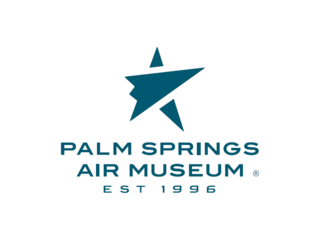
The Sikorsky H-19 Chickasaw is a multi-purpose piston engined helicopter that was used by the United States Army and United States Air Force. It was also license-built by Westland Aircraft as the Westland Whirlwind in the United Kingdom. United States Navy and United States Coast Guard models were designated HO4S, while those of the U.S. Marine Corps were designated HRS. In 1962, the U.S. Navy, U.S. Coast Guard and U.S. Marine Corps versions were all redesignated as H-19s like their U.S. Army and U.S. Air Force counterparts.

The Avro Canada CF-100 Canuck is a Canadian twinjet interceptor/fighter designed and produced by aircraft manufacturer Avro Canada. It has the distinction of being the only Canadian-designed fighter to enter mass production.

The Lockheed JetStar is a business jet produced from the early 1960s to the 1970s. The JetStar was the first dedicated business jet to enter service, as well as the only such airplane built by Lockheed. It was also one of the largest aircraft in the class for many years, seating ten plus two crew. It is distinguishable from other small jets by its four engines, mounted on the rear of the fuselage, and the "slipper"-style fuel tanks fixed to the wings.

The Fairchild C-119 Flying Boxcar was an American military transport aircraft developed from the World War II-era Fairchild C-82 Packet, designed to carry cargo, personnel, litter patients, and mechanized equipment, and to drop cargo and troops by parachute. The first C-119 made its initial flight in November 1947, and by the time production ceased in 1955, more than 1,100 had been built.

The Piasecki H-21 Workhorse/Shawnee is an American helicopter, the fourth of a line of tandem rotor helicopters designed and built by Piasecki Helicopter. Commonly called "the flying banana", it was a multi-mission helicopter, capable of being fitted with wheels, skis or floats.

The Sikorsky H-34 "Choctaw" is an American piston-engined military helicopter originally designed by Sikorsky as an anti-submarine warfare (ASW) aircraft for the United States Navy. It has seen extended use when adapted to turbine power by the British licensee as the Westland Wessex and Sikorsky as the later S-58T.

The Naval Aircraft Factory N3N was an American tandem-seat, open cockpit, primary training biplane aircraft built by the Naval Aircraft Factory (NAF) in Philadelphia, Pennsylvania, during the 1930s and early 1940s.

The Beechcraft Model 18 is a 6- to 11-seat, twin-engined, low-wing, tailwheel light aircraft manufactured by the Beech Aircraft Corporation of Wichita, Kansas. Continuously produced from 1937 to November 1969, over 9,000 were built, making it one of the world's most widely used light aircraft. Sold worldwide as a civilian executive, utility, cargo aircraft, and passenger airliner on tailwheels, nosewheels, skis, or floats, it was also used as a military aircraft.

The Convair C-131 Samaritan is an American twin-engined military transport produced from 1954 to 1956 by Convair. It is the military version of the Convair CV-240 family of airliners.

The Palm Springs Air Museum (PSAM), is a aviation museum in Palm Springs, California focused on World War II aviation. Many of these aircraft have been used by motion picture companies in movies.

Hill Aerospace Museum is a military aviation museum located at Hill Air Force Base in Roy, Utah. It is dedicated to the history of the base and aviation in Utah.
The Air Zoo, founded as the Kalamazoo Aviation History Museum, is an aviation museum and indoor amusement park next to the Kalamazoo-Battle Creek International Airport in Portage, Michigan. The Air Zoo holds many historical and rare aircraft, including the world's fastest air-breathing aircraft, the SR-71B Blackbird. Many of its antique planes are airworthy. Among its other attractions are a 180-degree theater that projects a 2-D film simulation of a B-17 bombing mission during World War II; and various amusement rides, including flight simulators of a rocket trip to Mars, a U.S. Navy F/A-18 Hornet, a stunt biplane, a hot air balloon, a veteran U.S. Navy F-14A Tomcat that served aboard USS America, and more. Air Zoo is a Smithsonian Affiliate.

The Pueblo Weisbrod Aircraft Museum is a non-profit aviation museum located in Southern Colorado. It was founded in the mid-1970s by former Pueblo City Manager Fred Weisbrod. The museum is made up of two hangars that were built in 2005 and 2011. The hangars house several of the museum's aircraft along with thousands of artifacts dating from World War I to modern day. PWAM is home to the International B-24 Memorial Museum and the Southern Colorado Space Museum and Learning Center. There are several historic military vehicles in the museum's collection, many of which are still in operational condition. The museum is located six miles east of Pueblo, Colorado on US Highway 50 at the Pueblo Memorial Airport, occupying space on what was the Pueblo Army Air Base during World War II. It is managed and maintained by the Pueblo Historical Aircraft Society.

The Barksdale Global Power Museum is an aviation museum run by the United States Air Force on Barksdale Air Force Base near Bossier City, Louisiana. Hosted by the 2nd Bomb Wing, it maintains a large collection of military aircraft and historical artifacts that illuminate the early days of United States military aviation, the Barksdale base, and the formations of the 2nd Bomb Wing and the 8th Air Force.

The Naval Air Station Wildwood Aviation Museum is an aviation museum located at the Cape May Airport in Lower Township, in Cape May County, New Jersey, United States.

The Chico Air Museum is a nonprofit aviation museum located at the Chico Municipal Airport in Chico, California. Its mission statement is to "collect, preserve, document and display aircraft, and aviation and space artifacts. The museum’s primary purpose is to educate and inspire people of all ages about aviation and the history of flight".
The Historic Aircraft Restoration Project is an aviation museum located in Hangar B at Floyd Bennett Field in New York, New York.




















